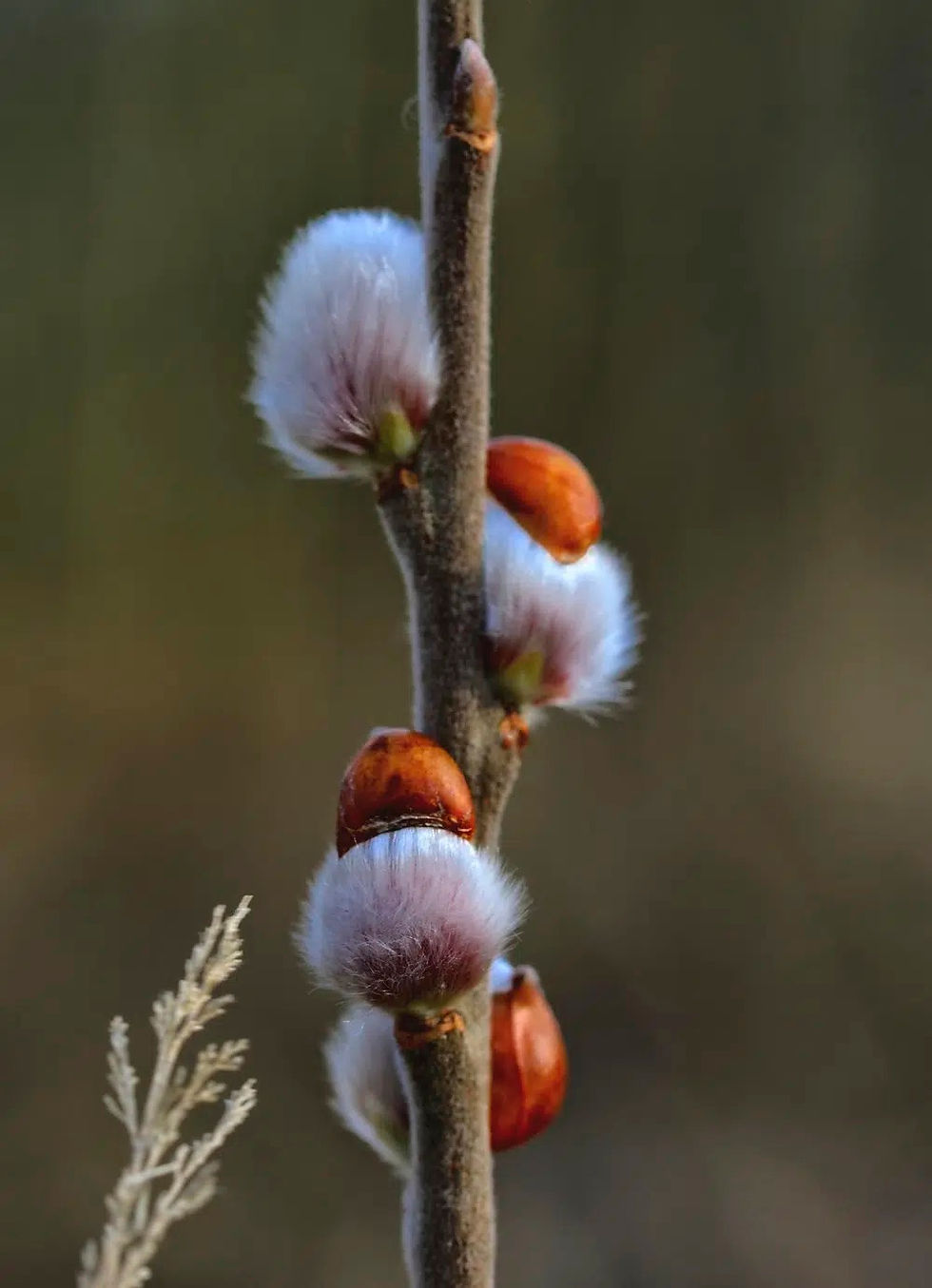Pussy Willow - Salix discolor
Salix discolor, or Pussy Willow, is a perennial deciduous shrub native to Michigan and the U.P.. It is named for the soft fuzzy catkins that appear on the stems in the spring. Note that the male plants have showier catkins, but both are showy in their own way. Both male and female plants are needed for good wildlife seed production. It grows 6 to 15 feet in height and nearly as wide. Pussy Willow can be cut to the ground every 3 to 5 years to maintain a small shrub shape if necessary. It prefers moist, well-drained soil and full sun, but will tolerate medium-moisture and part shade. Gallon pots will contain a 12-18" rooted cutting.
Pussy Willow has shallow, sturdy roots. Great if you are trying to hold together a stream bank or hillside, less great next to a concrete driveway. Not recommended for planting next to hardscape, but great in rocky soils away from foundations and paving. Also keep this water-loving shrub away from drain pipes and septic fields. Can spread by suckering under the right conditions. Prune or cut back as needed, or let the deer help keep it contained (protect shrubs when small).
Willows are a keystone host plant - meaning willows native to your area host a greater number of butterfly and moth caterpillars than most plants. Willows are superseded only by oaks as a host plant in our area, according to the National Wildlife Federation Native Plant Finder, which was developed in conjunction with Doug Tallamy and based on his research. Willow hosts a whopping 427 species of butterflies and moths, and that doesn't even take in to consideration other insect families like beetles. All of those insects mean willow is an excellent food source for birds, 90% of whom feed their young exclusively insects during nesting season. Pussy Willow is the host plant for Mourning Cloak and Viceroy butterflies, and is an excellent plant for early pollinators, especially small native bees.
To do a multi-level keystone host-plant habitat, if you have room, plant an oak native to us (red oak, Quercus rubra, is the most widespread and best adapted oak in the U.P.) for 452 species, some willow for 427 species, and a chokeberry for 418 species. Intersperse those with several species of goldenrod (the top rated host-plant flower/forb, supporting 135 species of butterfly and moth) and a native sunflower that suits your site (Helianthus) to feed an additional 77 species. Under everything plant native strawberry (Fragaria virginiana or vesca) for 82 species and native violets (Violoia sororia or other) for another 31 species, including the showy Great Spangled Fritillary butterfly. Adding a native grass will diversify the planting and host skipper butterflies. Switch Grass and its Panicum kin host the most variety at 22 species.
For bees, this planting offers early blooming chokeberry, strawberry, and violets. In mid-season they can use the long-blooming sunflowers, and for fall, crucial late-blooming goldenrod. Such a planting also offers native solitary bees a variety of stems to use for nest sites, especially if you keep the dead wood from the trees/shrubs in place or at least on site.
For birds, this planting offers nest sites, nest material, and a buffet of food. The insects hosting on the plants are crucial for feeding both nestlings and many adult birds. Chickadees and woodpeckers will eat insects overwintering on the trees and shrubs all winter, as well as harvesting the larvae out of goldenrod galls. The chokeberry and strawberry offer fruits for other birds. Those that eat seeds can munch on goldenrod, sunflower, and Switch Grass in the fall, winter, and early spring. Blue Jays, who are the primary dispersers of acorns (step aside, squirrels), will appreciate the acorns. This is not an exhaustive list, but it is easy to see how planting just 8 native species can support hundreds, maybe thousands of kinds of insects and birds. Imagine what can happen if you add some coneflowers, asters, columbine...
Please note, we do not grow this plant from seed yet, we source it from a downstate nursery. The nursery has reported that, although they verify their stock to be free of Neonicotinoids, they do use pesticides on their nursery stock. We will continue to search for a U.P. source so that we can offer this plant up to our normal pesticide-free standards. However, we offer this plant in the meantime because using a native plant to landscape instead of a similarly-raised cultivar will ultimately be beneficial, especially for a long-lived shrub.

